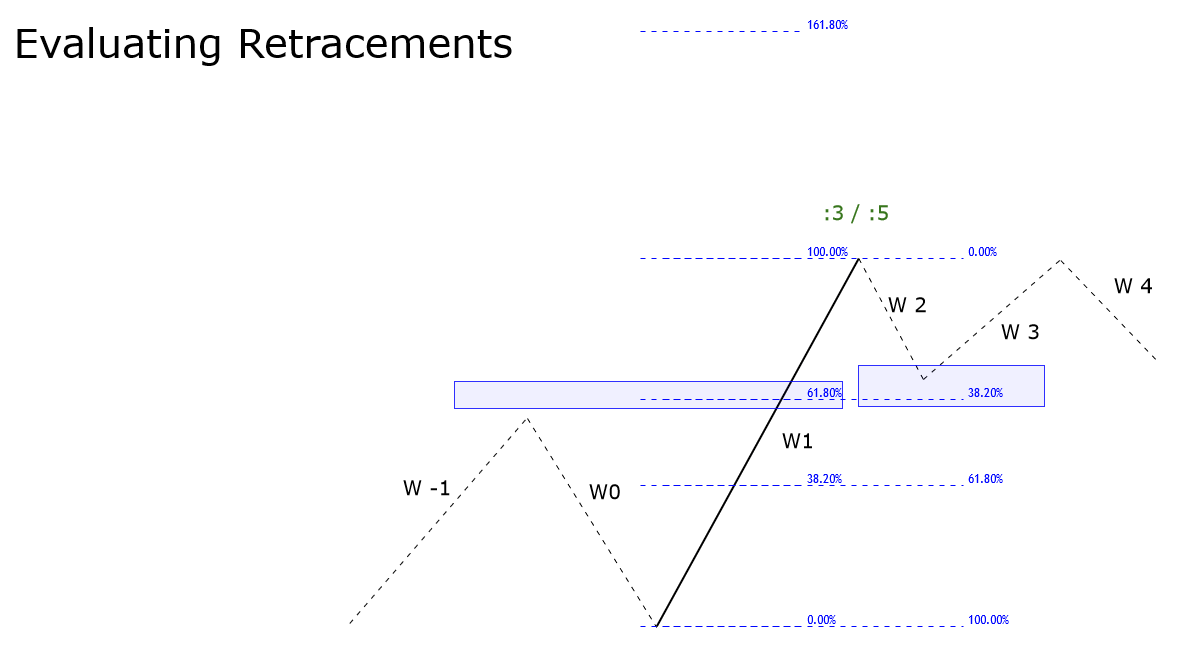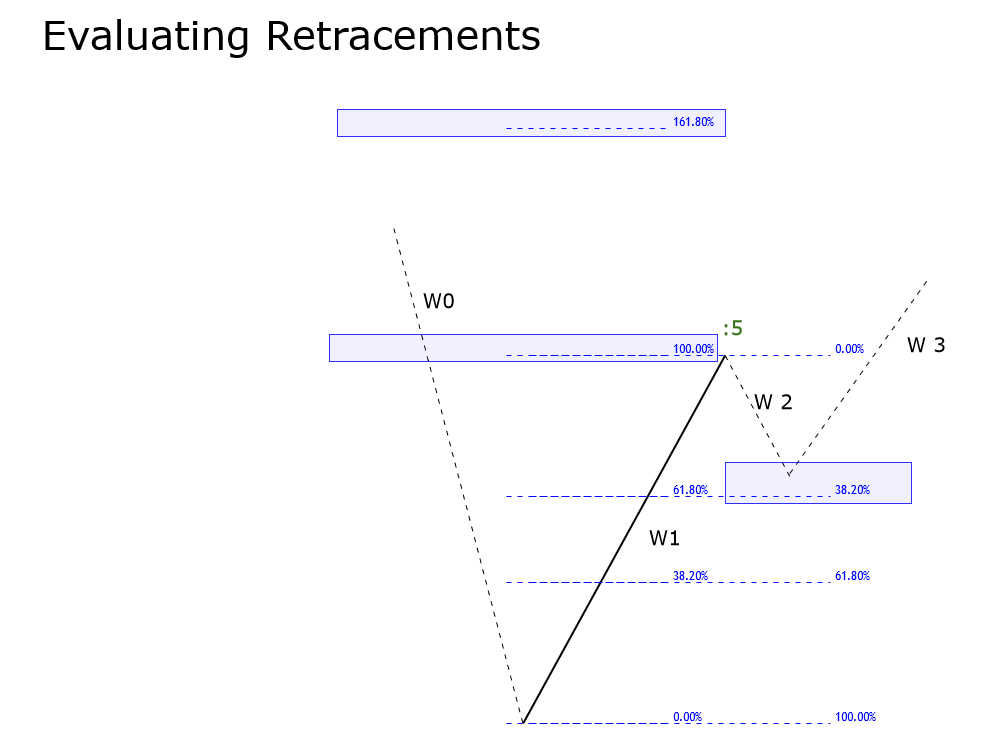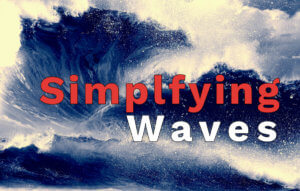In our previous educational post, we learned to identify the end of a movement. In this article, we will discuss how to use and evaluate retracements in the wave analysis.
Defining Retracement Rules
Glenn Neely, in his work “Mastering Elliott Wave,” establishes a set of rules and conditions to evaluate the retracements that each wave makes.
The first step begins with the analysis of the first movement and comparison of the retracement made in the second move (W2) with the first one (W1). Once we evaluated the retracement of W2, we need to analyze the retracement developed on the previous wave (W0) with respect to the first move.
In summary, depending on the retracement of wave 2 (W2) with respect to wave 1 (W1) and the retrace of wave zero (W0) compared to W1. Neely defined a ser of rules and conditions to evaluate and identify each movement. The set of rules will be as follows.
First Rule
We consider this rule when the second wave (W2) is lesser than 38.2% of the first wave (W1). Once we have measured the retracement made by W2, we must evaluate the previous wave (or wave W0). Under this rule, there are four possible conditions.
Condition “a”: occurs when the high of W0 is below the 61.8% level of W1. However, it is necessary to evaluate the retracement experienced by the previous wave to W0 (it is W-1). Depending on its length, W1 could be identified as “:3” or “:5”. It means that W1 could be part of a corrective or impulsive structure.
Condition “b”: this condition occurs when if W0’s high is above 61.8% but below 100% of W1. Depending on the length of W-1, W1 could correspond to an impulsive or a corrective wave; thus, W1 could be identified as “.5” or “:3.
Condition “c”: this condition occurs when W0 is above or equal to 100% of W1 level and less or equal than 161.8 of W1. In this case, we will label as “:5” the end of wave 1. However, under certain conditions, W1 could correspond to a “:3” structure.
Condition “d”: occurs when W0 is larger than 161.8% of W1. In this case, the end of W1 must be identified as “:5”. The labeling means that W1 corresponds to a five-wave sequence.
Conclusions
The evaluation of the retracements experienced by W2 and W0 could deliver insights to the wave analyst of what kind of wave is W1. However, in some cases, it is necessary to evaluate the context of more waves. This study would provide the wave analyst an overview of the Elliott wave structure that the market develops. For example, if the structure in progress corresponds to a terminal movement of a corrective sequence or an impulsive wave in development.
In the following article, we will continue discovering the rules described by Gleen Neely for the wave analysis.
Suggested Readings
– Neely, G.; Mastering Elliott Wave: Presenting the Neely Method; Windsor Books; 2nd Edition (1990).
– Prechter, R.; The Major Works of R. N. Elliott; New Classics Library; 2nd edition (1990).










5 replies on “How to Use Retracements to Analyze Waves – Part 1”
excuse me, what is the mean “:3” and “:5”?
It like wave 3th or 5th wave?
Can you take some chart as an example?
Hello Kahng! The use of labels “:3” and “:5” corresponds to Glenn Neely’s work to recognize the kind of wave in progress. Remember that R.N. Elliott classified two kinds of movements, impulsive and corrective moves. Also, labels are a tool to identify the market context, not the Elliott wave analysis’ goal.
Thanks, and look forward to your continued development of Elliott analysis
W1 label “:5” = W1 is an impulse, have 5 wave inside
or W1 label “:5” = W1 is a part of the impulse, like wave 1st, 3rd, 5th???